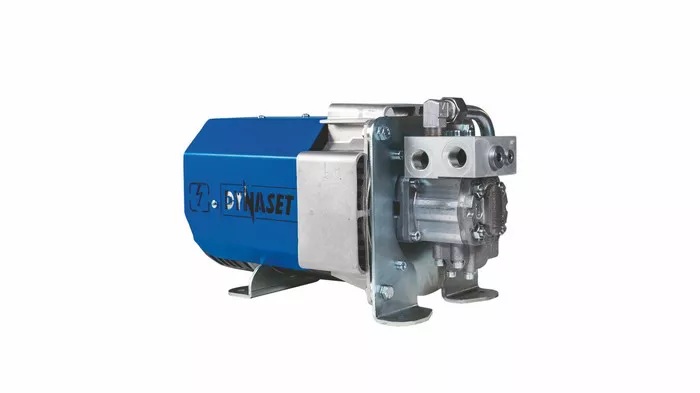In an era where power reliability is crucial for daily life, whole house generators have become a necessity rather than a luxury. Power outages caused by extreme weather, grid failures, or unforeseen technical issues can disrupt home life, leading to inconvenience, safety risks, and economic loss. Whole house generators provide a seamless backup power solution, ensuring that an entire home continues to function normally during power disruptions. This article explores the working principles, key components, benefits, and considerations when choosing a whole house generator.
What is a Whole House Generator
A whole house generator, also known as a standby generator, is a backup power system designed to supply electricity to an entire home during a power outage. Unlike portable generators, which require manual setup and fueling, whole house generators are permanently installed and automatically activate when power is lost.
Whole house generators typically run on natural gas, propane, or diesel and are connected directly to a home’s electrical system. When a power outage occurs, an automatic transfer switch (ATS) detects the failure and signals the generator to start, ensuring uninterrupted power supply within seconds.
Working Principles of Whole House Generators
The operation of a whole house generator follows a systematic process:
Power Failure Detection:
The ATS monitors the home’s power supply from the grid. When it detects an outage, it sends a signal to the generator to start running.
Generator Activation:
Upon receiving the signal, the generator starts operating, typically using an internal combustion engine powered by natural gas, propane, or diesel.
Power Transfer:
Once the generator stabilizes, the ATS disconnects the home from the main power grid and connects it to the generator, allowing electricity to flow.
Continuous Operation:
The generator continues running, supplying power to the entire home until the main grid is restored.
Automatic Shutdown:
When the ATS detects that the main power supply is restored, it switches the home’s electrical system back to the grid and shuts down the generator.
Key Components of a Whole House Generator
A whole house generator consists of several crucial components that work together to ensure reliable power generation:
Engine:
The engine is the primary power source of the generator. It converts fuel (natural gas, propane, or diesel) into mechanical energy, which drives the alternator.
Alternator:
The alternator converts mechanical energy into electrical energy, generating power for household use.
Automatic Transfer Switch (ATS):
The ATS is a key component that detects power loss and automatically switches the home’s electrical system from the grid to the generator.
Fuel System:
The fuel system supplies the engine with the necessary fuel to operate. It consists of fuel lines, a fuel tank (if using diesel or propane), and regulators.
Cooling System:
A cooling system prevents the generator from overheating. It can be air-cooled or liquid-cooled, depending on the model and power output.
Exhaust System:
The exhaust system safely expels gases produced during combustion, such as carbon monoxide, to prevent health hazards.
Battery and Control Panel:
The battery helps start the generator, while the control panel provides monitoring and control functions for the system’s operation.
Benefits of Whole House Generators
Whole house generators provide numerous advantages, making them a valuable investment for homeowners:
Uninterrupted Power Supply:
Ensures that essential appliances, heating, cooling, security systems, and medical devices continue operating during an outage.
Automatic Operation:
Eliminates the need for manual setup, as the ATS activates the generator automatically upon detecting a power failure.
Increased Home Value:
Homes equipped with standby generators often have higher resale value and attract buyers looking for reliability and safety.
Protection Against Power Surges:
Prevents damage to electrical devices caused by sudden power outages and surges.
Long-Term Cost Savings:
While the initial investment is high, whole house generators reduce costs associated with spoiled food, frozen pipes, and emergency accommodations during extended outages.
Choosing the Right Whole House Generator
When selecting a whole house generator, consider the following factors:
Power Capacity:
Choose a generator with enough power to support essential appliances and systems. Generator capacities range from 10kW to 50kW or more, depending on home size and energy needs.
Fuel Type:
Consider the availability and cost of fuel in your area. Natural gas is convenient but requires a pipeline connection, while propane and diesel offer portability but need fuel storage.
Noise Level:
Some generators operate more quietly than others. Liquid-cooled generators tend to be quieter than air-cooled models.
Brand and Warranty:
Choose a reliable brand with good customer support and a warranty to ensure long-term serviceability.
Installation Requirements:
Professional installation is necessary to ensure compliance with local codes and safety regulations.
Maintenance and Safety Tips
To ensure long-term reliability, regular maintenance is essential:
Routine Inspections: Check fuel levels, battery status, and fluid levels periodically.
Oil and Filter Changes: Replace oil and filters according to manufacturer recommendations.
Exercise the Generator: Run the generator at least once a month to keep the engine and components in good working condition.
Proper Ventilation: Ensure adequate airflow and proper exhaust placement to prevent carbon monoxide buildup.
Professional Servicing: Schedule annual inspections by a certified technician to detect and fix potential issues.
Conclusion
Whole house generators are an invaluable solution for homeowners seeking uninterrupted power supply during outages. Their automatic operation, reliability, and ability to power an entire home make them superior to portable generators. When choosing a whole house generator, considering factors such as power capacity, fuel type, noise level, and maintenance requirements is crucial. Investing in a high-quality generator not only enhances home comfort and security but also provides peace of mind knowing that power disruptions will never be a problem.

